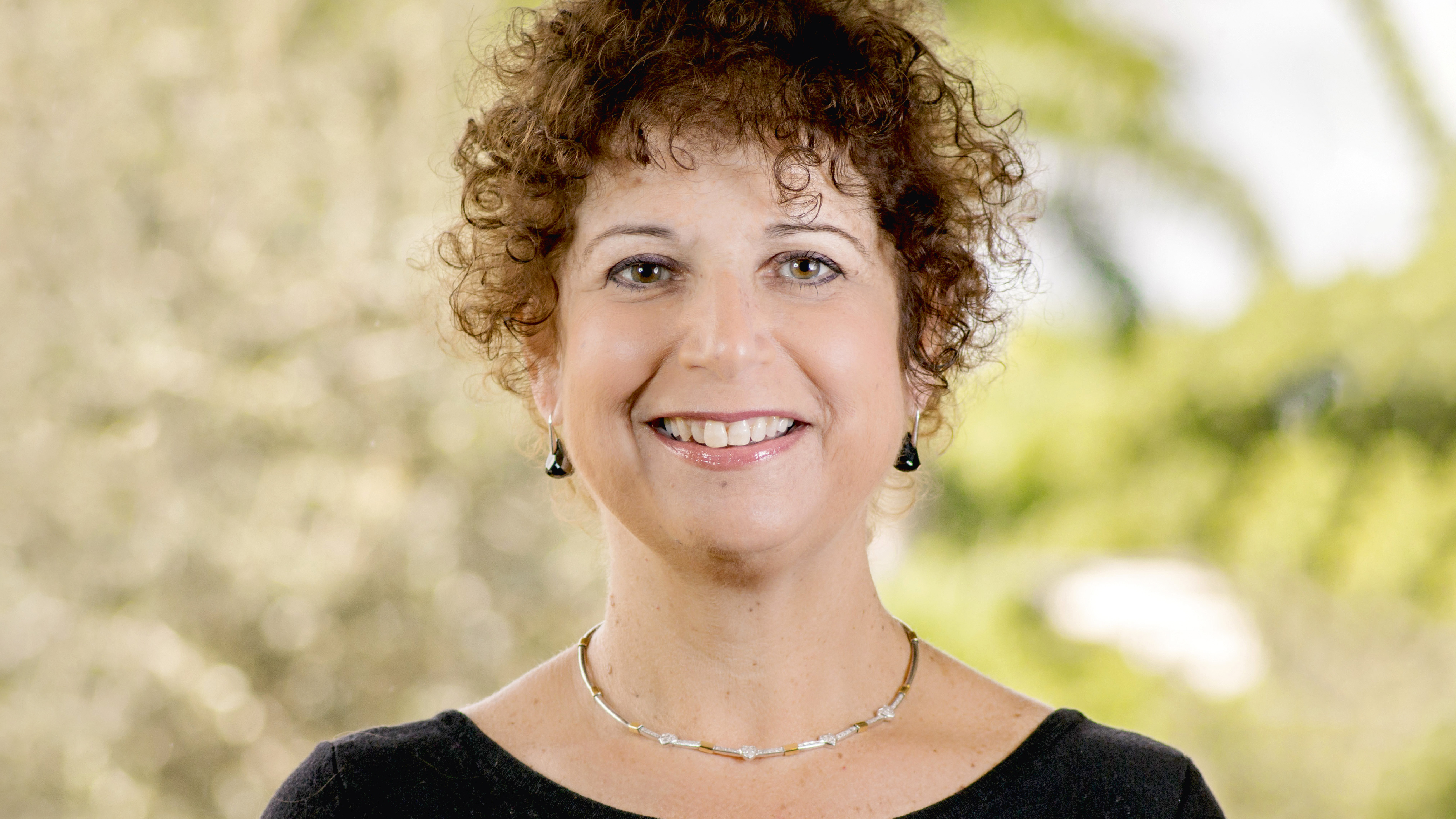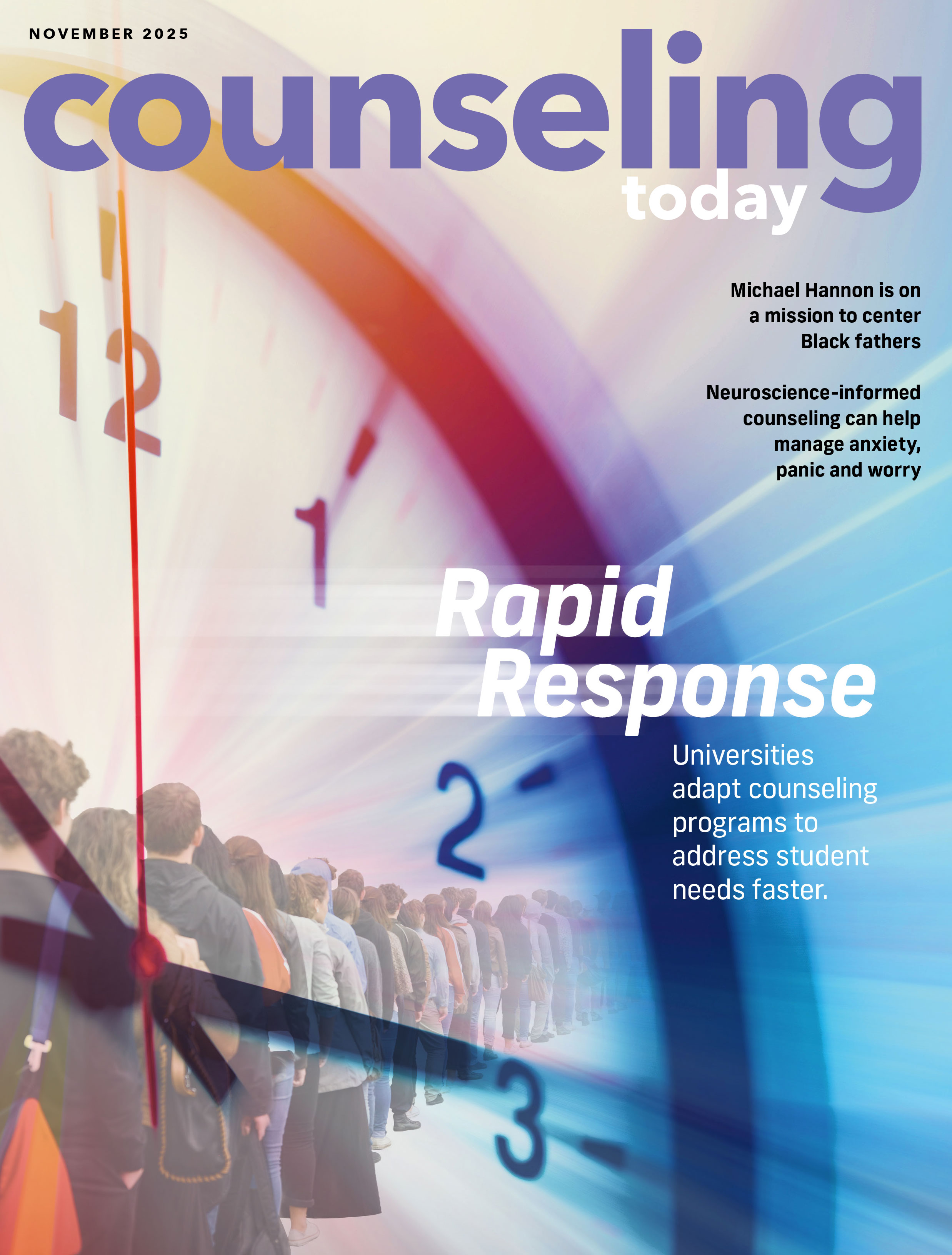The Rise of Resilience
By Rachel Crowell
May 2025

Debra Ainbinder, PhD, LPC, ACS, has had numerous lived experiences with cultivating resilience in her life. She developed a passion for psychology at an early age. In high school, friends often turned to her for advice, and she wanted to be equipped with professional tools to help people. However, while considering college majors, she had a concerning realization: “Everyone my age was going to be getting a psych degree,” she says. Determined to differentiate herself from her peers, Ainbinder opted to study public relations (PR) instead. “I thought I could change the world that way,” she says.
At the time, she didn’t know that a counseling career would beckon. After earning a bachelor’s degree in journalism and mass communication with a specialization in PR from the University of Florida, Ainbinder landed a PR job. But working for a company that focused primarily on real estate clients “wasn’t exactly changing the world the way I wanted.” She decided to switch gears. A career in mental health counseling was calling her name, so she went back to school, earning a master’s degree in counseling psychology from Nova University of Florida. “That’s when I started on a clinical path.”
Ainbinder specializes in helping others — students, clients, supervisees and professional colleagues — build resilience. She defines resilience as being “about handling obstacles and challenges, turning them into opportunities, and finding your own individual balance in the face of different adversity.” Ainbinder is president-elect and an executive board member of the International Association for Resilience and Trauma Counseling (IARTC), a division of ACA, and vice chair of the Academic Resilience Consortium. She has a private practice and is a professor of clinical mental health counseling and associate dean in the College of Arts and Sciences at Lynn University in Florida.
In her work for agencies and in private practice, Ainbinder has seen clients across the lifespan, from children to older adults. When she decided to accept a teaching position at Lynn University, her career trajectory was forever changed. “I always call it ‘the magic of Lynn,’” she says. “I was just going to adjunct part-time, and 23 years later, I’m a dean.”
In her early years there, she transitioned to a full-time position in which she helped develop the university’s graduate degree programs in psychology and clinical mental health.
“Once I really got bitten by the psych bug — what became the counseling bug — it was really no turning back.”
Realizing she had found a passion in teaching and training future clinicians, she returned to school, this time to earn her PhD in counseling with a specialization in marriage and family counseling from Barry University of Florida. Her dissertation showed that students and clinical supervisees benefit when the faculty members who teach and supervise them continue to work as clinicians themselves.
During her doctoral studies, Ainbinder’s life circumstances were far from simple, and her own resilience was instrumental in accomplishing her PhD goal. “I got my PhD while I had a full-time job and children, while also trying to have a full life, which was important,” she says. Because online classes weren’t offered at the time, she commuted between home and both universities.
Ainbinder recognizes that students at her university continue to grapple with how to balance their school, work and home life responsibilities. She oversees Lynn University’s Resilience Toolkit, a series of interventions designed to foster resilience within the school’s community.
Resilience Initiatives
Ainbinder’s strong emphasis on resilience is rooted in her previous prevention and education work. In partnership with Pennsylvania State University, she researched student drinking and families’ participation in setting limits with kids. She also worked with a narcotics overdose and prevention group, conducting research and facilitating support groups. “Unfortunately, many of the groups of parents who lost children didn’t welcome in parents who had lost children by overdose,” she says. “There was a different stigma at the time, so they didn’t have anyone to run their support groups.”
She works with the Quell Foundation, a nonprofit focused on destigmatizing mental health conditions and treatment, along with reducing the stigma of death by suicide. The foundation has a special focus on highly stigmatized groups, such as first responders and student athletes.
Through those efforts, Ainbinder began probing the idea of how people bounce back from significant struggles. She began asking what factors helped some people overcome tremendous challenges, leading to them surviving and thriving, while others continued to struggle or didn’t survive. “That’s where I started to turn to resilience,” she says.
As a result of the COVID-19 pandemic, resilience was brought to the forefront of mental health conversations, Ainbinder says. However, even before the pandemic, she had been helping develop and implement Lynn University’s Resilience Toolkit, which aims to help students throughout their college years.
The toolkit is comprehensive. “We start before they come in — we do our own basic baseline research on them, and we give them a freshman reader on resilience,” Ainbinder says. In a core course, first-year students read about resilience identity, while second-year students participate in a seminar on resilience building. Second- and third-year students also visit those courses for “resilience roundtable” discussions.
The program offers faculty training too. “We have coffee and conversations on resilience, so we’re building that culture of resilience here,” Ainbinder says.
Fostering social support is a key step faculty can take to create a culture of resilience in higher education. “Anything that a faculty member can do to help build community within the classroom, within their major, those are all really helpful,” she says. Helping students learn self-compassion and that everyone makes mistakes are also fundamental ways faculty can help build resilience. While Ainbinder notes that a professor shouldn’t be a counselor for students, they can still remind students help is available if they need it.
She and her colleagues are developing the final phase of the toolkit, which they envision as a web-based program or app that will combine and summarize everything students have learned about resilience in the earlier stages of the program.
College students and clients aren’t the only individuals Ainbinder encourages to become more resilient. For her clinical supervisees, she embraces what she calls an empowerment supervision” approach that’s aimed at helping new counselors feel confident and competent in their abilities.
It’s important, she says, “to normalize the ‘Monday morning quarterback’ thing. It’s really easy for me, after you have done a session, to give you feedback ... but you were the one on the field.” With her supervisees, she emphasizes helping them find approaches that work for them and their clients, rather than sticking to a one-size-fits-all approach.
The Art of Balance
Ainbinder loves new challenges. “I tend to say ‘yes’ to new projects,” she says. For instance, the IARTC is a relatively new division, only in its third year. As president-elect, Ainbinder is aiming to help the organization become established enough to have its own conference. “We’re still infrastructure-building,” she says. However, she’s attuned to the tremendous need for more professional resources and support.
“This has been a very challenging time for counselors,” she says. “It’s been one after the other — disasters and challenges. There’s also a lot going on politically, administratively, which also will affect our counseling community.”
Ainbinder isn’t satisfied with maintaining the status quo. “I have never taught a class the same way any two times,” she says. She credits the fact that she thrives on novelty and change for helping her remain resilient throughout her career. “We’ve had a lot of changes here in the whole academia and university system,” Ainbinder says. “When I got here, it was transparencies and chalk.” Having a positive outlook on change has helped her adapt to different learning management systems, changes to digital devices and other technologies, and working with different faculty colleagues.
However, she recognizes her constant drive to innovate has drawbacks. Embracing too many new projects can make maintaining a work-life balance tricky. She’s trying to discern when she should turn down a new opportunity.
When Ainbinder does need to say “no,” she embraces her decision by reminding herself that there are other people around her who are up to the task. She aims to surround herself with people who can take on those new challenges instead. “I’m keeping my community strong in that way. It’s not really delegating; it’s more like sharing.”
For students, early-career professionals and seasoned colleagues who want to get more involved with the topic of resilience, Ainbinder recommends taking an individualized approach. “Just like with anything else, there isn’t just one way to do it,” she says. “It’s about finding your spot and how you can make a difference.”


